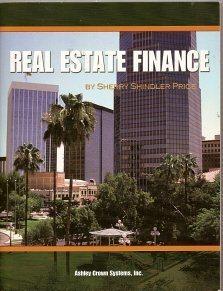Question
Purpose For many companies, the opportunity to sell to Wal-Mart is the equivalent of winning the PowerBall lottery. For other companies, however, selling to Wal-Mart
Purpose
For many companies, the opportunity to sell to Wal-Mart is the equivalent of winning the PowerBall lottery. For other companies, however, selling to Wal-Mart is perhaps not the best strategy. Although some companies, like Procter & Gamble, are able to successfully navigate Wal-Marts demands, others find that it causes them tremendous problems (even to the point of pushing them out of business). Regardless of the ultimate outcome, making the commitment to sell (or not to sell) through Wal-Mart is a decision as big as the retailing behemoth itself and one often made by management teams rather than by a single manager.
Scenario
Because of your companys success, the end-of-the-year accounting review is usually an upbeat occasion, and this December is no different. Your company manufactures an innovative kickstand that reduces injuries by keeping a childs bike from falling all the way to the ground. After the device was written up in a parents magazine recently, sales to specialty bike shopsyour primary customershave started to climb. Despite the increased demand, you can still make kickstands to order.
At a meeting with your management team, you remark that although sales are increasing at a slow but steady rate, the company still has a large amount of excess capacity. A colleague agrees and then enthusiastically announces, I know how to take care of that. Lets sell to Wal-Mart! A hush falls over the meeting. Becoming a Wal-Mart supplier would mean honing your current distribution process into a finely tuned, perfect delivery operation. The retailing behemoth gives suppliers a 30-second window to deliver their goods to Wal-Mart distribution centers; you currently ship product via UPS ground. Wal-Mart requires severe price concessions from all its suppliers, a practice that has forced many American manufacturers to outsource production overseas in order to get their production costs low enough to meet Wal-Marts pricing mandates. Master Lock, Carolina Mills, Levis, and, a bit closer to home, Huffy Bicycle are a few examples. Your company uses local suppliers for metal, paint, plastics, and packaging, and it pays its 25 workers above-market wages. Thankfully, at the moment your company is the only manufacturer of the kickstand, so you have more freedom to set a competitive price on that item. If you begin selling through Wal-Mart, however, imitators will soon follow, and that would definitely affect your already modest margins. Not to mention that Wal-Mart uses historical price data about a company and its competitors to drive prices down across industries. Suppliers are rarely if ever granted a price increase; on the contrary, they are asked for regular price decreases!
In addition, if vendors want their products on Wal-Marts shelves, they have to implement Wal-Marts customized business plans. Each year, the big retailer hands its suppliers detailed strategic business planning packets. Wal-Mart grades its suppliers with weekly, quarterly, and annual report cards. And when it comes to discussion of price, there is no real negotiation even for household brands. Plus, Wal-Mart often requires its suppliers to underwrite the costs of the retailers supply-chain productivity initiatives, like using radio-frequency identification (RFID) tags on their products for inventory tracking, a system that can cost between $13 million and $23 million to put in place. Trying to meet Wal-Marts requirements has pushed many small- and medium-sized businesses into bankruptcy. Businesses that stay afloat have generally done so by outsourcing to China (in areas like shoes, house wares, and apparel, 80 to 90 percent of Wal-Marts inventory comes from China).
But there are also benefits to selling to Wal-Mart. You have instant access to the worlds largest global retailing network. Doing things the Wal-Mart way inevitably leads to more efficient operations. And the volume! You could sell exponentially more kickstands through Wal-Mart than through the small specialty retailers to whom you currently sell. If doing business with Wal-Mart is so bad, why do Unilever, P&G, and Dial sell 6, 17, and 28 percent of their goods, respectively, to the giant retailer? A former president of Huffy Bicycle once said that Wal-Mart gives you a chance to compete. If you cant compete, thats your problem. You agree, to a point. Before you can voice any of the pros and cons, another manager expertly sums up the dilemma by saying, The only thing worse than selling to Wal-Mart is not selling to Wal-Mart.
Before you begin this decision making process, you will probably need to do some preliminary research on Wal-Marts business practices.
Response Questions (minimum 500 words)
1. Do you apply to become a Wal-Mart supplier, with all that entails? Why or why not?
2. If you become a Wal-Mart supplier, what key areas of your operations will need to change and how?
3. Think about how the decision-making technique you chose affected the outcome of your decision. Choose a group decision making technique and explain whether you think your decision would have been different, and why.
Step by Step Solution
There are 3 Steps involved in it
Step: 1

Get Instant Access to Expert-Tailored Solutions
See step-by-step solutions with expert insights and AI powered tools for academic success
Step: 2

Step: 3

Ace Your Homework with AI
Get the answers you need in no time with our AI-driven, step-by-step assistance
Get Started


